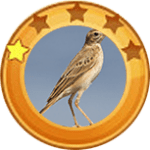- Home
- Shop
- Forest Series
- Grassland Series
- Desert Series
- Contact
- Home
- Shop
- Forest Series
- Grassland Series
- Desert Series
- Contact






LICENSED KIDS CAR GIFT
This 12V official-licensed upgraded kids ride on roadster with swing-up scissor doors is a realistic model of a Lamborghini Sain car, which will be an attractive Christmas/birthday gift for your 3-6 year-old toddlers to make them the eye-catching among their friends.
DURABLE STRUCTURE WITH SHOCK-ABSORBING WHEELS
Made from reinforced eco-friendly plastic (passed ASTM F963 and CPSIA), the motorized vehicle working on 4 wear-proof plastic wheels with comfortable spring suspension system is sturdy and stable for boys and girls within 55 lbs to explore the outdoors.
SAFETY DESIGN WITH 3-POINT BELT
Featuring a single seat with a 3-point safety belt, soft start/stop, limited speed (up to 3.1 mph), and remote priority function, the 12V toddler supercar is safe to play with parental supervision.


CHARACTERISTICS
The Chipmunk is a member of the family Mammalia, Rodentia and Sciuridae. It is also known as the Striped Squirrel, the Timber Tiger and the Mini-bear. The body length among most Chipmunks ranges from 5.5 to 6.3 inches and the tail length is 5 Inches. Chipmunks typically weigh about 0.02 pounds and live about 5 to 10 years. They have small but prominent ears which face forwards, and small eyes on the sides of their heads. Most wild Chipmunks are lively.


Lorem ipsum dolor sit amet, consectetur adipiscing elit. Ut elit tellus, luctus nec ullamcorper mattis, pulvinar dapibus leo.


CHARACTERISTICS
The Richard’s Pipit is a large pipit, 6.69-7.87 inches in length, with a weight of 0.88-1.27 ounces and a wingspan of 11.42-12.99 inches. It is a slender bird that often stands very upright. It has long yellow-brown legs, a long tail with white outer feathers, and a long dark bill with a yellowish base to the lower mandible. The hind claw is long and fairly straight. It is an undistinguished-looking species on the ground, mainly brown above and pale below. There are dark streaks on the upper parts and breasts while the belly and flanks are plain. The face is strongly marked with pale lores and supercilium and dark eyestripe, moustachial stripe, and malar stripe. There are two wing bars formed by pale tips to the wing-coverts.

RANGE AND HABITAT
The Richard’s Pipit winters among the local species, from Pakistan to India, China, and Malaysia. Coming from Siberia where it breeds, it is a fairly regular autumn visitor, although rare. Richard’s Pipit breeds in low areas (usually below 1800 meters of elevation), in the soft slopes of the steppes, and in wet and sunny grassy or cultivated areas, but not arid. During migration, it mainly frequents low areas with vegetation, grasslands, fields, and marshes. It prefers areas near water.

DIET
Richard’s Pipit feeds mainly on insects, adults and larvae, such as beetles and grasshoppers, some caterpillars and spiders. It may follow the livestock, taking some prey flushed by the cattle.

BEHAVIOR
The Richard’s Pipit is a long distance migrant. It travels as well by day as by night. It feeds on invertebrates caught on the ground, by foraging among vegetation and picking into crevices and rocks. It may catch flying insects by hopping or while flying briefly. It is often seen standing up, with a waggling tail. Courtship displays are poorly known, but Richard’s Pipit probably performs flight displays while singing, like most Motacillidae.
The breeding season occurs between April and July. Richard’s Pipit nests on the ground, in a large cup made with grass and roots. The interior is lined with soft materials, fine grass, and hair. The nest is situated among tussocks, in a depression. The female lays 3-4 eggs. Both parents share the incubation and rear the young.

The Chipmunk is a member of the family Mammalia, Rodentia and Sciuridae. It is also known as the Striped Squirrel, the Timber Tiger and the Mini-bear. The body length among most Chipmunks ranges from 5.5 to 6.3 inches and the tail length is 5 inches. Chipmunks typically weigh about 0.02 pounds and live about 5 to 10 years. They have small but prominent ears which face forwards, small eyes on the sides of their heads. Most wild Chipmunks are lively.
The Red Squirrel, a member of the Sciuridae, is an arboreal, omnivorous rodent often referred to as a Forest Seeder and folklore as the Devil King Squirrel.
The Arizona Gray Squirrel, also known as the American Gray Squirrel, is a member of the family Rodentia and Sciuridae. It is small in size, with gray fur and a belly between white and cream. It has long ears, no tufts of fur and a fluffy tail edged in white. The body is about 16-20 inches long and weighs up to 1.4 pounds.
The Rock Squirrel, also known as Sao Maozi or Stone Mouse, belongs to the rodent and is a species in the family Sciuridae. The most common natural predators of the Rock Squirrel include bobcats, owls, eagles and snakes. Though the Rock Squirrel is cute, alert, and courageous, it is still considered a pest due to its habit of destroying crops.
The Abert’s Squirrel is a member of the genus Sciurus with a body length of 18-22.8 inches, a tail length of 7.5-9.8 inches and a weight of 2.2 pounds, and can live up to 10 years in the wild. Its most distinctive feature is tassels of fur about 0.8-1.2 inches long at the tip of its ears, which looks very interesting. In addition, it is alert and agile.

THE BIRDS — -AMERICAN PIPIT
The American Pipit is a well-known winter visitor to the lowlands of the west and as such is to be found on the plains and open foothills at the western end of the Yosemite section. There, from October until March, it may be sought wherever the grass is scant enough for the birds to run about unhindered. It is thus frequently to be found on the same ground as the Horned Lark, and comparison shows that the two have much in common with regard to both structure and mode of life.
Pipits are sometimes called “wag-tails” because of the almost incessant up-and-down movement of the tail when they are on the ground. When walking or running, the bird also makes a fore-and-aft pecking movement of the head, in unison with the tread of its feet; this is more vigorous when the birds are moving rapidly. The head movement is thus timed rather evenly, but the tail motion is irregular, and practiced whether the pipit be standing still or walking.
The dun-colored plumage of the pipit matches so well the brown earth on which the bird forages while in our latitudes, that the observer often has difficulty in keeping the object of his interest in sight. On plowed ground the difficulty is increased as the many irregularities in the surface afford the bird opportunities to pass behind clods or into furrows and become lost to view.
When running or foraging the pipit is usually silent, but just before taking to wing the birds as a rule utter several short and sharp notes. Then they spring into the air, flashing as they rise the white outer margins of the tail. Unless badly frightened a bird will usually circle about one or more times and then return almost to the spot whence it arose. Safety is sought first by running, and then in flight. The pipit, like most other plains dwellers, never seeks shelter in dense vegetation.
The greatest number of pipits seen at any one time was fully fifty in one flock observed near Snelling on January 8, 1915. East of the mountains they were encountered in small numbers. Near Williams Butte one was seen in flight over a pasture, on September 23, 1915. Three days later, at an altitude of 10,000 feet near the head of Warren Fork, 2 were flushed from a ‘buffalo-grass’ meadow. Their call notes and actions were just like those seen on the west slope. There was nothing to lead to the belief that they were more than passing transients there. In Yosemite Valley small flocks of pipits were noted by Mr. C. W. Michael (MS) on November 5, 12, and 13, 1920.



Follow Us: